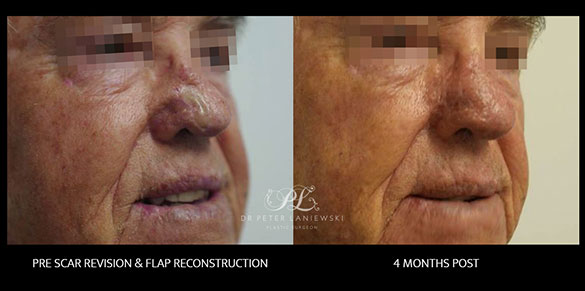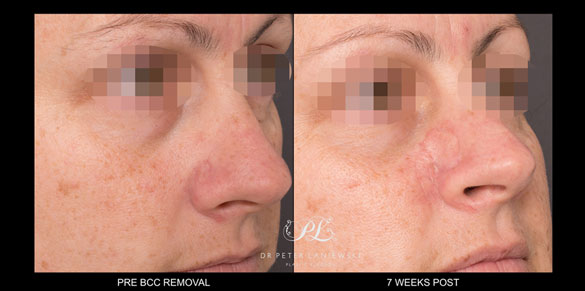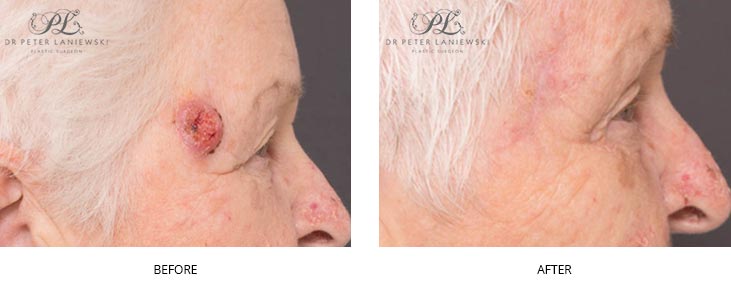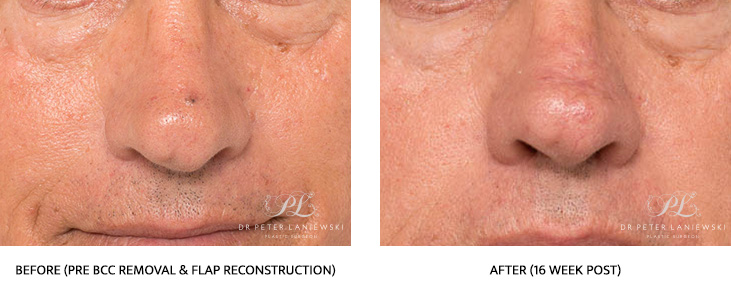Australia has the highest rate of skin cancer in the world, and youthful exposure to the sun can lead to skin cancer manifesting later in life. Accepting a skin cancer diagnosis can be difficult, especially if the tumour is located where cancer removal will result in noticeable scarring. Even though most skin cancers are not malignant, they can become so over time and should be removed as soon as possible.
Depending on the cancer type and size, there are specific removal methods, including reconstructive surgery, to provide the best possible outcomes. Many minor skin cancers can be treated on-site using only a local anaesthetic.
For more aggressive cancers, a biopsy may be undertaken prior to removal, followed by reconstructive surgery. Dr Laniewski offers expert advice regarding surgical options for reconstruction, and as much as possible, will align scarring with your natural body shape or facial features.





